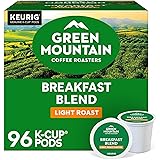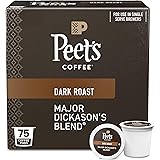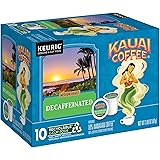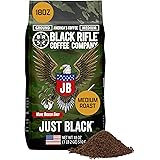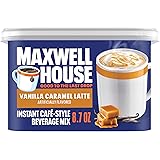Mastering Your Coffee Maker: A Comprehensive Guide to Brewing the Perfect Cup
As demonstrated in the accompanying video, operating a standard drip coffee maker involves a series of straightforward steps. However, transforming a basic brewing process into an exceptional coffee experience requires attention to detail and an understanding of key variables. This guide aims to expand upon the fundamental instructions, providing insights into optimizing each stage of your coffee preparation.
For many, the coffee maker is an indispensable part of their morning ritual, yet few realize the potential for elevating their daily brew. By focusing on ingredient quality, precise measurements, and diligent maintenance, one can consistently achieve a superior cup of coffee from their home appliance.
Understanding Your Drip Coffee Maker
Before initiating the brewing process, it is beneficial to comprehend the basic anatomy of a drip coffee maker. Key components typically include the water reservoir, where fresh water is stored, and the heating element, which warms this water to an optimal brewing temperature.
Furthermore, the filter basket is designed to hold the coffee grounds, allowing the hot water to extract flavor as it passes through. Finally, the carafe or pot collects the brewed coffee, often resting on a hot plate to maintain its warmth. Familiarity with these parts ensures proper setup and effective operation.
The Essential Ingredients: Coffee and Water
The quality of your final cup is predominantly dictated by the ingredients you select. Focusing on premium coffee and appropriate water will significantly enhance your brewing outcome.
Selecting Quality Coffee Grounds
The type and freshness of your coffee beans are paramount. For drip coffee makers, a medium grind is generally recommended, as it allows for optimal water flow and flavor extraction without becoming over or under-extracted.
Furthermore, consider purchasing whole beans and grinding them just before brewing. This practice preserves volatile aromatic compounds, which degrade rapidly once coffee is ground. Proper storage in an airtight container, away from light and heat, also maintains freshness.
The Role of Water Quality
Water constitutes over 98% of your coffee, making its quality incredibly important. Tap water can often contain chlorine, sediment, or high mineral content, which can impart undesirable flavors to your brew.
Therefore, utilizing filtered water is strongly advised. This ensures a clean, neutral base that allows the nuanced flavors of the coffee to shine through. Conversely, distilled or excessively soft water should be avoided, as it can result in a flat-tasting coffee due to insufficient mineral content for proper extraction.
Step-by-Step Brewing: Expanding on the Basics
While the video outlines the core steps, refining each stage contributes significantly to a better cup of coffee. Precision in these actions will yield more consistent and satisfying results.
Preparing the Filter Basket
The first step, placing a coffee filter in the filter basket, seems straightforward, yet options exist. Paper filters are common and effective, offering convenience and ease of cleanup, though some argue they can impart a slight paper taste if not rinsed prior to use.
Alternatively, permanent mesh filters are an eco-friendly choice, requiring only rinsing after each use. Regardless of type, ensure the filter is correctly seated within the basket to prevent grounds from entering the brewed coffee.
Achieving the Optimal Coffee-to-Water Ratio
The video recommends two tablespoons of coffee per every 6 ounces of water. This is a widely accepted starting point, often referred to as the “golden ratio” in coffee brewing, equating to approximately 1:15 or 1:17 coffee-to-water ratio by weight.
However, personal preference plays a significant role. For a stronger brew, one might increase the coffee amount slightly, while a milder cup would require less. Experimentation with this ratio will allow you to tailor the coffee’s strength and flavor profile to your individual taste.
Filling the Water Reservoir Accurately
After determining your desired coffee strength, accurately fill the coffee maker’s water compartment. Most coffee makers feature clear markings on the reservoir, indicating amounts in cups or ounces. Filling to the precise mark corresponding to your chosen coffee quantity is crucial for consistency.
It is important to use the carafe to measure the water, ensuring that the water added directly correlates to the volume you intend to brew. Overfilling can lead to spills and diluted coffee, while underfilling may result in a stronger, but insufficient, yield.
The Brewing Cycle and Its Significance
Once the water, filter, and pot are in place, activating the coffee maker initiates the brewing cycle. The heating element warms the water to between 195°F and 205°F (90°C and 96°C), which is the ideal temperature range for extracting soluble compounds from the coffee grounds.
Hot water is then directed over the grounds, typically saturating them first in a phase often referred to as the “bloom.” This allows gases to escape, preparing the grounds for optimal extraction. Subsequently, water drips through the coffee bed, collecting in the carafe below, completing the crucial extraction process.
Post-Brewing Best Practices
The brewing process concludes when all the water has passed through the grounds. However, the steps taken immediately after and in subsequent maintenance are vital for coffee quality and appliance longevity.
Serving and Enjoying Your Brew
Upon completion of the brewing cycle, promptly remove the carafe from the hot plate if you do not intend to consume all the coffee immediately. While the hot plate keeps coffee warm, prolonged exposure can lead to “cooking” the coffee, resulting in a bitter, burnt taste.
For optimal flavor, coffee is best enjoyed shortly after brewing. If keeping it warm is necessary, consider transferring it to an insulated carafe or thermos. This method retains heat without continuing to cook the coffee, preserving its freshly brewed taste.
Maintaining Your Coffee Maker
Regular cleaning is imperative for preventing the buildup of coffee oils and mineral deposits, which can negatively impact flavor and appliance performance. After each use, discard the used filter and grounds, then rinse the filter basket and carafe thoroughly with warm, soapy water.
Furthermore, periodic descaling is necessary to remove mineral buildup from the heating elements and water lines. This process typically involves running a solution of equal parts white vinegar and water through the coffee maker, followed by several cycles of plain water. Descaling should be performed every 1-3 months, depending on your water hardness and frequency of use, to ensure the optimal functioning of your coffee maker.


